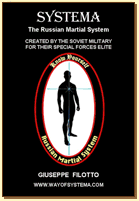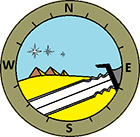First the stuff no one but me probably cares about, my specific progress. Immediately after, the neurology and philosophy in the lessons learnt. Further philosophy after (see bold headings to skip the bits you don’t care about).
Progress
Yesterday: 3 hits out of 11 shots – total shots 52. Distance (accurately measured now: 35 metres / 115 feet. Shoulder injured but not made worse, in fact, level of injury has been better understood as a result of firing the 11 shots. Lost one more arrow.
Lessons Learnt:
- Fletching makes a big difference (at least 50% of my “error” margin presently).
- Train with injury is as per karate, Systema, etc. Can be done, but requires mental adjustment, relaxation, perception
Today: 1 hit out of 12 – total shots 64. Distance 35 metres. First 8 had wrong attitude, anxious/rushed. Realised state is key. Took next four shots with better neurology. First was “good” and worked as recalibration (missed left). Second hit. Third missed by one arrow width, still a “good” shot. Fourth was tense. Shoulder pain, and wrong intent (wanting to hit).
Lessons Learnt:
-
Mental attitude is (as always) pivotal in anything related to martial stuff (and life, really, as well as prayer, observing reality, and recognising fear (and to a certain extent, pain) as essentially irrelevant, and illusions). However, specific to archery/difference from hand-to-hand and/or firearm use:
- You can “push” into a win with H-t-H, and firearms too, with pure aggression, speed, and a certain, will-to-power. My perception is this is not really possible and certainly not practical in archery.
- Zanshin is of course originally I think related to archery, though it is the same element and it plays out slightly differently in each martial art, the essence of it is always the same. In archery at least for me, now, it needs to be calm, serious, deliberate. In other things, H-t-H, shooting, generic fighting, I can slip into it almost instantly and on the move. Not so here. Maybe not possible in the respect I mean it, but… and this is the good thing:
- If performed correctly, it sets the mind for a while. Which was instinctively my purpose of taking up archery, despite my total ignorance of it. And firing the shots first thing, early morning, before any work, was definitely helpful to set the tone for later. It’s maybe the best way for people like me to have a kind of prayer time. Attune. Focus. Calm. And that element of… what? Kill-shot. Execution of something that touches on the edges of life and death. Practicing for it until there is little distinction between the practice and the thing itself. Makes the mundane irritants of everyday life fade considerably.
- The injury/pain as well as the intent of wanting to “win”, are all net negatives in terms of accuracy, efficiency of execution, and so on. As usual, I overdid it and inflamed the injury a bit more. Made it worse. But that too has a lesson. Zanshin required in healing too. Also a reminder to use Systema breathing to fix the injury. Why do I forget important stuff like that? The rush to do. The rush to chase some external need to finish quickly, carry out my duties, etc. etc. But as usual, the truth is: If you’re in a rush… go slow. Need to learn this; and archery definitely lends itself to this attitude.
- The fletching is definitely an issue and the error margin it introduces is too much to be acceptable. I ordered another dozen arrows with feather fletching, so in due course I should have two dozen of them.
Philosophical Musings
Go Rin No Sho , remains, to my mind, superior to The Art of War by Sun Tzu, On War by Clausewitz, and The Prince by Machiavelli. And the fifth book of it, The Void , remains the absolute apex of the concept of battle/life and death action/mental and physical flow. I of course elaborated in my own view of things in my own book Systema , but that being a manual primarily did not distill my own perception of such things as fighting, shooting, or all things martial-related.
One of the truest statements concerning such things is that Myamoto Mushashi wrote words to the effect that the art and science of war and strategy was among one of the (I think ten) holy skills.
And I agree. Counter-intuitive as it may seem initially, the Catholic perspective on this, is extremely similar to the Samurai one.
In our fallen, corrupt, Satanic-ruled world, the Way of the Warrior, is, unfortunate as it may be, almost inevitably necessary . And since it is that, those who walk such a path need to somehow balance in their humanity, spirituality, sense of justice, ethics, and God’s laws, love and mercy, against the occasional need to kill the enemies of all that is good and just.
In Catholic thought, killing is always wrong. We know it is not the optimum Way. Nevertheless, sometimes it is required . And if it be required, the least one can do, is be serious, calm, certain, and definitive as well as efficient when such requirements come up. Penitence for the “sinful” part, will be our private matter between us, our souls, and God. Even a violent act that is not condemned by Church dogma (defending innocents or the weak is a dogmatic principle of Catholicism, as is the death penalty) carries a certain level of stain on our soul. Yet, if we are to be just, defenders of the faith and protectors of our betters who more perfectly exemplify God’s love, then it is incumbent upon us to be utterly ruthless with those who would harm them, us, and our way of life, religion, or disparage our Lord.
The Paradox is apparent only to external unbelievers.
To faithful Catholics, the concept is perfectly logical. And the Samurai had similar basic principles. If you are to be a Samurai, you had best be the best version of a warrior that you can be. Measured, calm, sure, educated, humble (if not in a false way) free of fear of death, or cowardice, and absolutely definitive when acting in capacity of someone now going to war.
Archery, possibly best encompasses the correct attitude more than any other martial endeavour. Long range shooting is a little similar, but… the Samurai were right… comparatively, it is a cowardly weapon. For all that I love it and now it is even outdated by even more cowardly weapons like drones.
And it is vastly different from hand-to-hand or melee combat with weapons. They are barbaric, vicious, and even if disciplined and dignified at their vertices, 1 the inevitable entanglement of blood spatter, viscera, and the brutal reality of a fight with hand-weapons, makes it a hellish thing when compared to the equally deadly and nasty death from a razor-sharp arrow through your lung, which nevertheless, has some measure of detachment from the gurgling death of the target.
A man capable of killing other men needs, of course, to be mired in the trenches of the vicious and brutal aspects of war, best embodied in corps-a-corps, of course, because not being so makes you only an observer from afar. But after that, the better warrior, will refine his skill and his art, and his own soul too, by learning the aspects that come from pursuits such as poetry, meditating on a flower or a bee, painting or drawing, or, indeed, archery.
There is a peace in the trajectory of the aging fighter after all. It is a natural and serene progression, even if the way may well be through the valley of fear, death, brutality and alarm.
I can only suggest archery to all those of you who may have been too long in the trenches, clubbing away at the enemies. Whatever shape your trenches may have taken.
Duelling with rapiers for example.
This post was originally published on my Substack. Link here







